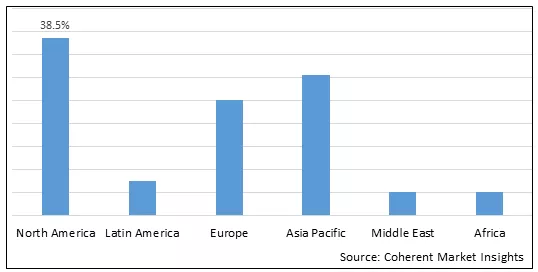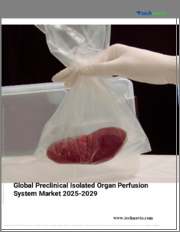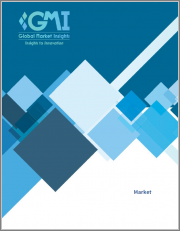
|
시장보고서
상품코드
1454252
세계의 소아용 관류 시장 : 제품 유형별, 용도별, 최종 사용자별, 지역별Global Pediatric Perfusion Market, By Product Type, By Application, By End User, By Geography |
||||||
세계 소아용 관류 시장 규모는 2023년에 5억 7,470만 달러로 평가되었고, 2024년부터 2031년에 걸쳐 5.4%의 복합 연간 성장률(CAGR)로 성장했으며, 2031년에는 8억 7,530만 달러에 달할 것으로 예상됩니다.
| 보고 범위 | 보고서 세부정보 | ||
|---|---|---|---|
| 기준년 | 2023년 | 2023년/2024년 시장 규모 | 5억 7,470만 달러 |
| 실적 데이터 | 2019-2023년 | 예측 기간 | 2024-2031년 |
| 예측기간 2023/2024-2030년/2031년 CAGR: | 5.40% | 2030년/2031년 가치 예측 | 8억 7,530만 달러 |

소아용 관류는 개심술 중에 심폐 우회(CPB)를 받는 소아의 순환계를 통해 혈액을 공급하는 것입니다. CPB는 수술의 특정 부분에서 심장이 멈추는 동안 순환과 폐의 가스 교환을 유지하기 위해 인공 심폐 장치를 통해 환자의 혈액 순환을 우회하는 것을 포함합니다. 소아용 관류에는 성인 환자와 소아 환자의 해부학적, 생리학적 차이에 대응하기 위한 특수 장치, 기술 및 기술이 필요합니다. 지난 수십년동안 관류 기술의 진보, 회로 설계의 개선, 소아에 맞춘 수술 절차의 혁신 등으로 수술의 성공률이 크게 향상되었습니다. 그러나 선천성 심장 질환은 여전히 세계 유아 사망의 주요 원인 중 하나입니다.
시장 역학:
세계보건기구(WHO)의 추계에 따르면 선천성 심장병(CHD)은 출생아의 거의 1%에 영향을 미치는 질환입니다. 진단기술의 향상에 의해 CHD의 조기 발견이 가능하게 되어, 소아 심장외과 수술의 진보와 함께 생존율과 치료 성적이 향상되었습니다. 그 결과 소아 심장 수술, 따라서 소아용 관류 서비스의 혜택을 받을 수 있는 소아의 수가 증가하고 있습니다.
소아용 관류는 인공 심폐 장치를 사용하여 심장 수술 중 소아의 심폐 기능을 지원합니다. 더 많은 신생아와 유아가 CHD로 진단되어 수정 수술과 완화 수술을 받을수록 특수 관류 장치에 대한 수요가 증가하고 있습니다. 수술의 진보는 복잡한 심장 수술이 더 이른 단계에서 이루어지게 되었고, 소아 CHD 환자의 수명과 삶의 질이 증가했습니다.
그러나 소아용 관류 시장은 과제에도 직면하고 있습니다. 소아 심장 수술의 고가의 비용은 특히 종합적인 의료 보험이 적용되지 않는 지역에서는 건강 관리 시스템과 가족에게 큰 경제적 부담이 될 수 있습니다. 또한 소아용 관류에는 특수 전문 지식이 필요하며 훈련을 받은 소아용 관류 전문의의 부족이 지적되었습니다. 또 다른 과제는 관류 장치 시장을 제한할 수 있는 오프펌프 수술에 대한 관심이 높아지고 있다는 것입니다. 이러한 수술은 심장을 멈추지 않고 수행되기 때문에 인공 심폐 장치가 필요 없으며 관류 서비스에 대한 수요가 줄어들 수 있습니다.
이러한 과제에도 불구하고 소아용 관류 시장에는 특히 소형화된 관류 장치의 기술 혁신과 개척에 큰 기회가 존재합니다. 이러한 장비는 신생아와 유아의 생리적 요구에 더 적합하며, 보다 정확한 제어와 합병증 감소를 제공합니다. 이것은 소아 심장 의료의 큰 진보이며,이 시장의 기업에게 매력적인 기회를 제공하는 것입니다. 또한 건강 관리 인프라가 확대되고 소아 심장 의료에 대한 접근성이 향상된 신흥 시장에도 성장할 수 있습니다. 이 지역에서는 의료 서비스에 대한 수요가 급증하고 시장 확대를 촉진할 수 있습니다.
결론적으로, 의료 진보가 계속되는 동안 비용, 교육 및 기술과 관련된 과제에 전략적으로 대처할 수 있다면 세계 소아용 관류 시장은 성장할 수있는 좋은 위치에 있습니다. 제조업체와 의료 제공업체는 소아 의료용으로 설계된 특수하고 비용 효율적이며 기술적으로 첨단 관류 시스템에 투자함으로써 이러한 기회를 활용할 수 있습니다.
본 조사의 주요 특징
- 본 보고서에서는 세계 소아용 관류 시장을 상세하게 분석하여 예측기간(2023년을 기준년으로 2024-2031년) 시장 규모 및 복합 연간 성장률(CAGR%)을 제공합니다.
- 또한 다양한 부문에 걸친 잠재적인 수익 성장 기회를 밝히고, 이 시장에 대한 매력적인 투자 제안 매트릭스에 대해 설명합니다.
- 또한 시장 성장 촉진요인, 억제요인, 기회, 신제품의 상시 및 승인, 시장 동향, 지역별 전망, 주요 기업이 채용하는 경쟁 전략 등에 관한 중요한 고찰도 제공합니다.
- 기업 하이라이트, 제품 포트폴리오, 주요 하이라이트, 성과, 전략 등의 매개변수를 기반으로 세계 소아용 관류 시장에서 주요 기업을 프로파일링합니다.
- 이 보고서의 통찰을 통해 마케팅 담당자와 기업 경영진이 향후 제품 출시, 유형 업그레이드, 시장 확대, 마케팅 전술에 대한 정보를 바탕으로 의사 결정을 내릴 수 있습니다.
- 세계 소아용 관류 시장 보고서는 투자자, 공급업체, 제품 제조업체, 유통업체, 신규 참가자, 재무 분석가 등 이 업계의 다양한 이해관계자를 대상으로 합니다.
- 이해관계자는 세계 소아용 관류 시장 분석에 사용되는 다양한 전략 매트릭스를 통해 의사 결정이 용이해집니다.
목차
제1장 조사의 목적과 전제조건
- 조사 목적
- 전제조건
- 약어
제2장 시장 전망
- 보고서 설명
- 시장 정의와 범위
- 주요 요약
- Coherent Opportunity Map(COM)
제3장 시장 역학, 규제, 동향 분석
- 시장 역학
- 영향 분석
- 주요 하이라이트
- 규제 시나리오
- 제품 출시/승인
- PEST 분석
- Porter's Five Forces 분석
- 합병과 인수 시나리오
제4장 세계의 소아용 관류 시장 - 코로나 바이러스(COVID-19) 팬데믹의 영향
- 신형 코로나 바이러스 감염증(COVID-19)의 역학
- 공급측과 수요측 분석
- 경제적 영향
제5장 세계의 소아용 관류 시장, 제품 유형별(2019-2031년)
- 소아용 캐뉼라
- 원심식 혈액 펌프
- 소아 동맥 라인
- 막형 인공폐
- 체외 회로
- 기타
제6장 세계의 소아용 관류 시장, 용도별(2019-2031년)
- 심장혈관 수술
- 호흡기 용도
- 체외막 산소화
- 심폐 우회
- 장기의 관류와 보존
- 장기 이식
- 기타
제7장 세계의 소아용 관류 시장, 최종 사용자별(2019-2031년)
- 병원
- 전문 클리닉
- 외래수술센터(ASC)
- 기타
제8장 세계의 소아용 관류 시장, 지역별(2019-2031년)
- 북미
- 미국
- 캐나다
- 유럽
- 제품 유형별 시장 규모와 예측, 전년대비 성장률(2019-2031년)
- 용도별 시장 규모와 예측, 전년대비 성장률(2019-2031년)
- 최종 사용자별 시장 규모와 예측, 전년대비 성장률(2019-2031년)
- 국가별 시장 규모와 예측, 전년대비 성장률(2019-2031년)
- 영국
- 독일
- 이탈리아
- 프랑스
- 스페인
- 러시아
- 기타 유럽
- 아시아태평양
- 중국
- 인도
- 일본
- 호주
- 한국
- ASEAN
- 기타 아시아태평양
- 라틴아메리카
- 브라질
- 아르헨티나
- 멕시코
- 기타 라틴아메리카
- 중동
- GCC 국가
- 이스라엘
- 기타 중동
- 아프리카
- 남아프리카
- 북아프리카
- 중앙 아프리카
제9장 경쟁 구도
- Medtronic
- GE Healthcare
- LivaNova, PLC.
- Getinge
- Braile Biomedica
- XENIOS AG
- BL Lifesciences
- Terumo Corporation
- 3M
- Koninklijke Philips NV
- EUROSETS
- Merck KGaA
- Stryker
- Cardinal Health
- Nonin
- Sorin Group USA, Inc.
제10장 섹션
- 조사 방법
- 출판사에 대해
The global pediatric perfusion market size was valued at US$ 574.7 Mn in 2023 and is expected to reach US$ 875.3 Mn by 2031 growing at a compound annual growth rate (CAGR) of 5.4% from 2024 to 2031.
| Report Coverage | Report Details | ||
|---|---|---|---|
| Base Year: | 2023 | Market Size in 2023/2024: | US$ 574.7 Mn |
| Historical Data for: | 2019 to 2023 | Forecast Period: | 2024 - 2031 |
| Forecast Period 2023/2024 to 2030/2031 CAGR: | 5.40% | 2030/2031 Value Projection: | US$ 875.3 Mn |

Pediatric perfusion is the delivery of blood through the circulatory system in children undergoing cardiopulmonary bypass (CPB) during open heart surgery. CPB involves diverting the patient's blood circulation through a heart-lung machine to maintain circulation and lung gas exchange while the heart is stopped during specific parts of the surgical repair. Pediatric perfusion requires specialized equipment, techniques, and skills to handle the anatomical and physiological differences between adult and pediatric patients. Over the past few decades, procedural success rates have significantly improved due to advancements in perfusion technologies, circuit design modifications, and innovations in surgical techniques tailored for children. However, congenital heart defects continue to be one of the major causes of infant mortality worldwide.
Market Dynamics:
The global pediatric perfusion market is experiencing growth primarily due to the increasing incidence of congenital heart diseases (CHD), a condition affecting nearly 1% of live births according to World Helath Organization (WHO) estimates. Improved diagnostic techniques have led to the early identification of CHD, which, coupled with advancements in pediatric cardiac surgical procedures, has improved survival rates and outcomes. Consequently, this has elevated the number of children who can benefit from pediatric cardiac surgeries and, by extension, pediatric perfusion services.
Pediatric perfusion involves the use of a heart-lung machine to support the child's cardiopulmonary functions during cardiac surgery. As more newborns and infants are diagnosed with CHD and undergo corrective or palliative surgeries, the demand for specialized perfusion equipment has grown. The surgical advancements have allowed for complex cardiac interventions to be performed at earlier stages of life, extending the longevity and quality of life of pediatric CHD patients.
However, the pediatric perfusion market does face challenges. The high cost of pediatric cardiac surgeries can be a significant financial burden for healthcare systems and families, particularly in regions without comprehensive health insurance coverage. Moreover, pediatric perfusion requires specific expertise, and there is a recognized gap in the availability of trained pediatric perfusionists. Another challenge is the increasing focus on off-pump surgical procedures, which can limit the market for perfusion equipment. These surgeries, performed without stopping the heart, may not require a heart-lung machine, thereby decreasing the demand for perfusion services.
Despite these challenges, there are substantial opportunities in the pediatric perfusion market, particularly in the innovation and development of miniaturized perfusion equipment. These devices are better suited for the physiological needs of neonates and infants, offering more precise control and reduced complications. This represents a significant advancement in pediatric cardiac care, offering an attractive opportunity for players in the market. There is also potential for growth in emerging markets, where healthcare infrastructure is expanding, and access to pediatric cardiac care is improving. The burgeoning demand for healthcare services in these regions can stimulate market expansion.
In summary, as medical advancements continue, the global pediatric perfusion market is well-positioned for growth, provided that challenges around costs, training, and technology are strategically addressed. Manufacturers and healthcare providers can capitalize on these opportunities by investing in specialized, cost-effective, and technologically advanced perfusion systems designed for pediatric care.
Key Features of the Study:
- This report provides an in-depth analysis of the global pediatric perfusion market, and provides market size (US$ Million) and compound annual growth rate (CAGR%) for the forecast period (2024-2031, considering 2023 as the base year
- It elucidates potential revenue growth opportunities across different segments and explains attractive investment proposition matrices for this market
- This study also provides key insights about market drivers, restraints, opportunities, new product launches or approvals, market trends, regional outlook, and competitive strategies adopted by key players
- It profiles key players in the global pediatric perfusion market based on the following parameters - company highlights, products portfolio, key highlights, financial performance, and strategies
- Key companies covered as a part of this study include Medtronic, GE Healthcare, LivaNova, PLC., Getinge, Braile Biomedica, XENIOS AG, BL Lifesciences, Terumo Corporation, 3M, Koninklijke Philips N.V., EUROSETS, Merck KGaA, Stryker, Cardinal Health, Nonin, and Sorin Group USA, Inc.
- Insights from this report would allow marketers and the management authorities of the companies to make informed decisions regarding their future product launches, type up-gradation, market expansion, and marketing tactics
- The global pediatric perfusion market report caters to various stakeholders in this industry including investors, suppliers, product manufacturers, distributors, new entrants, and financial analysts
- Stakeholders would have ease in decision-making through various strategy matrices used in analyzing the global pediatric perfusion market
Detailed Segmentation:
- By Product Type:
- Pediatric Cannulas
- Centrifugal Blood Pumps
- Pediatric Arterial Lines
- Membrane Oxygenators
- Extracorporeal Circuits
- Others
- By Application
- Cardiovascular Surgery
- Respiratory Applications
- Extracorporeal Membrane Oxygenation
- Cardiopulmonary Bypass
- Organ Perfusion and Preservation
- Organ Transplantation
- Others
- By End User
- Hospitals
- Specialty Clinics
- Ambulatory Surgical Centers
- Others
- By Region
- North America
- Europe
- Asia Pacific
- Latin America
- Middle East
- Africa
- Top Companies in the Global Pediatric Perfusion Market:
- Medtronic
- GE Healthcare
- LivaNova, PLC.
- Getinge
- Braile Biomedica
- XENIOS AG
- BL Lifesciences
- Terumo Corporation
- 3M
- Koninklijke Philips N.V.
- EUROSETS
- Merck KGaA
- Stryker
- Cardinal Health
- Nonin
- Sorin Group USA, Inc.
Table of Contents
1. Research Objectives and Assumptions
- Research Objectives
- Assumptions
- Abbreviations
2. Market Purview
- Report Description
- Market Definition and Scope
- Executive Summary
- Pediatric Perfusion Market, By Product Type
- Pediatric Perfusion Market, By Application
- Pediatric Perfusion Market, By End User
- Pediatric Perfusion Market, By Region
- Coherent Opportunity Map (COM)
3. Market Dynamics, Regulations, and Trends Analysis
- Market Dynamics
- Drivers
- The increasing incidence of cardiovascular diseases (CVDs) in the pediatric population
- Increasing government initiatives and funding
- The emergence of new technologies in pediatric perfusion
- Technological advancements
- Impact Analysis
- Key Highlights
- Regulatory Scenario
- Product Launches/Approvals
- PEST Analysis
- PORTER's Analysis
- Merger and Acquisition Scenario
4. Global Pediatric Perfusion Market - Impact of Coronavirus (COVID-19) Pandemic
- COVID-19 Epidemiology
- Supply Side and Demand Side Analysis
- Economic Impact
5. Global Pediatric Perfusion Market, By Product Type, 2019-2031, (US$ Mn)
- Introduction
- Market Share Analysis, 2024 and 2031 (%)
- Y-o-Y Growth Analysis, 2020 - 2031
- Segment Trends
- Pediatric Cannulas
- Introduction
- Market Size and Forecast, and Y-o-Y Growth, 2019-2031,(US$ Mn)
- Centrifugal Blood Pumps
- Introduction
- Market Size and Forecast, and Y-o-Y Growth, 2019-2031,(US$ Mn)
- Pediatric Arterial Lines
- Introduction
- Market Size and Forecast, and Y-o-Y Growth, 2019-2031,(US$ Mn)
- Membrane Oxygenators
- Introduction
- Market Size and Forecast, and Y-o-Y Growth, 2019-2031,(US$ Mn)
- Extracorporeal Circuits
- Introduction
- Market Size and Forecast, and Y-o-Y Growth, 2019-2031,(US$ Mn)
- Others
- Introduction
- Market Size and Forecast, and Y-o-Y Growth, 2019-2031,(US$ Mn)
6. Global Pediatric Perfusion Market, By Application, 2019-2031, (US$ Mn)
- Introduction
- Market Share Analysis, 2024 and 2031 (%)
- Y-o-Y Growth Analysis, 2020-2031
- Segment Trends
- Cardiovascular Surgery
- Introduction
- Market Size and Forecast, and Y-o-Y Growth, 2019-2031,(US$ Mn)
- Respiratory Applications
- Introduction
- Market Size and Forecast, and Y-o-Y Growth, 2019-2031,(US$ Mn)
- Extracorporeal Membrane Oxygenation
- Introduction
- Market Size and Forecast, and Y-o-Y Growth, 2019-2031,(US$ Mn)
- Cardiopulmonary Bypass
- Introduction
- Market Size and Forecast, and Y-o-Y Growth, 2019-2031,(US$ Mn)
- Organ Perfusion and Preservation
- Introduction
- Market Size and Forecast, and Y-o-Y Growth, 2019-2031,(US$ Mn)
- Organ Transplantation
- Introduction
- Market Size and Forecast, and Y-o-Y Growth, 2019-2031,(US$ Mn)
- Others
- Introduction
- Market Size and Forecast, and Y-o-Y Growth, 2019-2031,(US$ Mn)
7. Global Pediatric Perfusion Market, By End User, 2019-2031, (US$ Mn)
- Introduction
- Market Share Analysis, 2024 and 2031 (%)
- Y-o-Y Growth Analysis, 2020-2031
- Segment Trends
- Hospitals
- Introduction
- Market Size and Forecast, and Y-o-Y Growth, 2019-2031,(US$ Mn)
- Specialty Clinics
- Introduction
- Market Size and Forecast, and Y-o-Y Growth, 2019-2031,(US$ Mn)
- Ambulatory Surgical Centers
- Introduction
- Market Size and Forecast, and Y-o-Y Growth, 2019-2031,(US$ Mn)
- Others
- Introduction
- Market Size and Forecast, and Y-o-Y Growth, 2019-2031,(US$ Mn)
8. Global Pediatric Perfusion Market, By Region, 2019-2031, (US$ Mn)
- Introduction
- Market Share Analysis, By Country, 2024 and 2031 (%)
- Y-o-Y Growth Analysis, For Country, 2020 - 2031
- Country Trends
- North America
- Introduction
- Market Size and Forecast, and Y-o-Y Growth, By Product Type, 2019-2031,(US$ Mn)
- Market Size and Forecast, and Y-o-Y Growth, By Application, 2019-2031,(US$ Mn)
- Market Size and Forecast, and Y-o-Y Growth, By End User, 2019-2031,(US$ Mn)
- Market Size and Forecast, and Y-o-Y Growth, By Country, 2019-2031,(US$ Mn)
- U.S.
- Canada
- Europe
- Introduction
- Market Size and Forecast, and Y-o-Y Growth, By Product Type, 2019-2031,(US$ Mn)
- Market Size and Forecast, and Y-o-Y Growth, By Application, 2019-2031,(US$ Mn)
- Market Size and Forecast, and Y-o-Y Growth, By End User, 2019-2031,(US$ Mn)
- Market Size and Forecast, and Y-o-Y Growth, By Country, 2019-2031,(US$ Mn)
- U.K.
- Germany
- Italy
- France
- Spain
- Russia
- Rest of Europe
- Asia Pacific
- Introduction
- Market Size and Forecast, and Y-o-Y Growth, By Product Type, 2019-2031,(US$ Mn)
- Market Size and Forecast, and Y-o-Y Growth, By Application, 2019-2031,(US$ Mn)
- Market Size and Forecast, and Y-o-Y Growth, By End User, 2019-2031,(US$ Mn)
- Market Size and Forecast, and Y-o-Y Growth, By Country, 2019-2031,(US$ Mn)
- China
- India
- Japan
- Australia
- South Korea
- ASEAN
- Rest of Asia Pacific
- Latin America
- Introduction
- Market Size and Forecast, and Y-o-Y Growth, By Product Type, 2019-2031,(US$ Mn)
- Market Size and Forecast, and Y-o-Y Growth, By Application, 2019-2031,(US$ Mn)
- Market Size and Forecast, and Y-o-Y Growth, By End User, 2019-2031,(US$ Mn)
- Market Size and Forecast, and Y-o-Y Growth, By Country, 2019-2031,(US$ Mn)
- Brazil
- Argentina
- Mexico
- Rest of Latin America
- Middle East
- Introduction
- Market Size and Forecast, and Y-o-Y Growth, By Product Type, 2019-2031,(US$ Mn)
- Market Size and Forecast, and Y-o-Y Growth, By Application, 2019-2031,(US$ Mn)
- Market Size and Forecast, and Y-o-Y Growth, By End User, 2019-2031,(US$ Mn)
- Market Size and Forecast, and Y-o-Y Growth, By Country, 2019-2031,(US$ Mn)
- GCC Countries
- Israel
- Rest of Middle East
- Africa
- Introduction
- Market Size and Forecast, and Y-o-Y Growth, By Product Type, 2019-2031,(US$ Mn)
- Market Size and Forecast, and Y-o-Y Growth, By Application, 2019-2031,(US$ Mn)
- Market Size and Forecast, and Y-o-Y Growth, By End User, 2019-2031,(US$ Mn)
- Market Size and Forecast, and Y-o-Y Growth, By Country/Region, 2019-2031,(US$ Mn)
- South Africa
- North Africa
- Central Africa
9. Competitive Landscape
- Medtronic
- Product Portfolio
- Key Developments
- Financial Performance
- Strategies
- GE Healthcare
- Product Portfolio
- Key Highlights
- Financial Performance
- Strategies
- LivaNova, PLC.
- Product Portfolio
- Key Highlights
- Financial Performance
- Strategies
- Getinge
- Braile Biomedica
- XENIOS AG
- BL Lifesciences
- Terumo Corporation
- 3M
- Koninklijke Philips N.V.
- EUROSETS
- Merck KGaA
- Stryker
- Cardinal Health
- Nonin
- Sorin Group USA, Inc.
- Analyst Views
10. Section
- Research Methodology
- About us



















